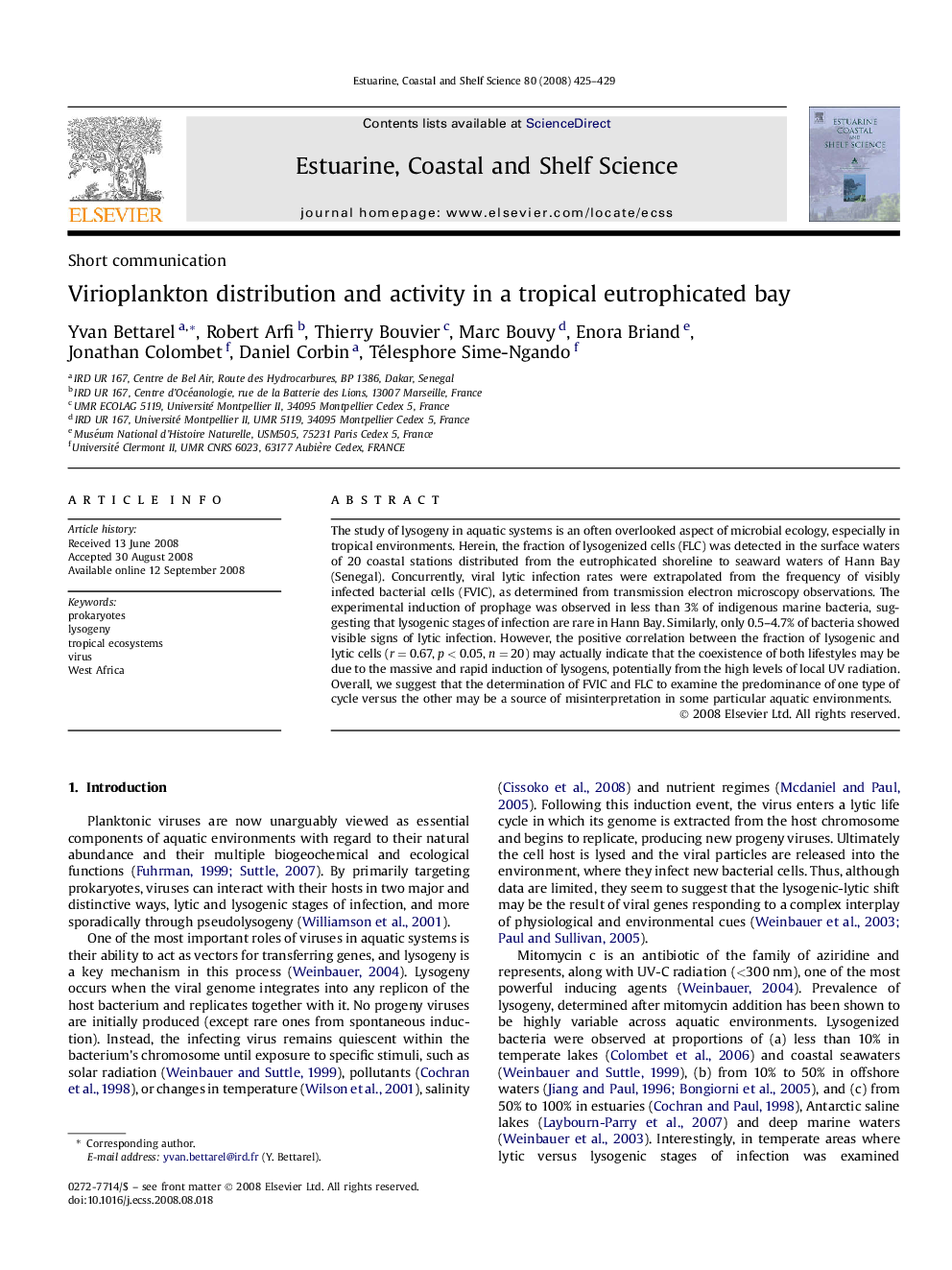| Article ID | Journal | Published Year | Pages | File Type |
|---|---|---|---|---|
| 4541510 | Estuarine, Coastal and Shelf Science | 2008 | 5 Pages |
The study of lysogeny in aquatic systems is an often overlooked aspect of microbial ecology, especially in tropical environments. Herein, the fraction of lysogenized cells (FLC) was detected in the surface waters of 20 coastal stations distributed from the eutrophicated shoreline to seaward waters of Hann Bay (Senegal). Concurrently, viral lytic infection rates were extrapolated from the frequency of visibly infected bacterial cells (FVIC), as determined from transmission electron microscopy observations. The experimental induction of prophage was observed in less than 3% of indigenous marine bacteria, suggesting that lysogenic stages of infection are rare in Hann Bay. Similarly, only 0.5–4.7% of bacteria showed visible signs of lytic infection. However, the positive correlation between the fraction of lysogenic and lytic cells (r = 0.67, p < 0.05, n = 20) may actually indicate that the coexistence of both lifestyles may be due to the massive and rapid induction of lysogens, potentially from the high levels of local UV radiation. Overall, we suggest that the determination of FVIC and FLC to examine the predominance of one type of cycle versus the other may be a source of misinterpretation in some particular aquatic environments.
